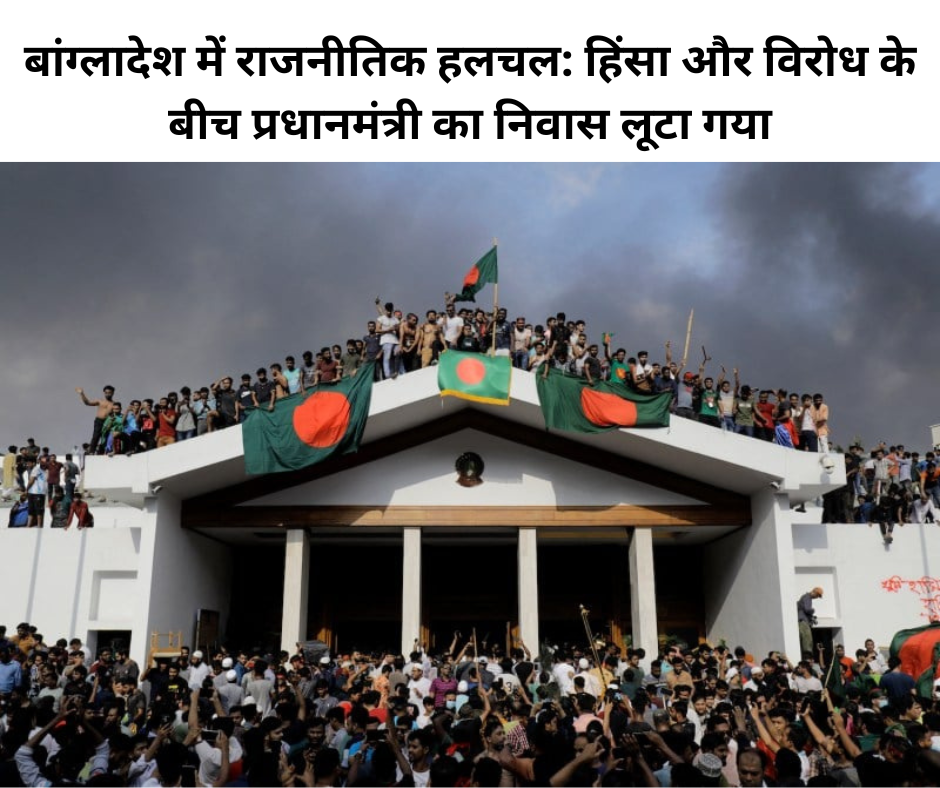Unrest in Bangladesh: Protesters Storm Prime Minister Sheikh Hasina’s Residence
In a shocking turn of events, protesters in Bangladesh forcefully entered the official residence of Prime Minister Sheikh Hasina in Dhaka, causing widespread looting and vandalism. This incident is part of ongoing unrest that has tragically claimed the lives of nearly 100 people in violent clashes.
The Incident at Ganabhaban
On a day filled with turmoil, protesters broke through the gates of Ganabhaban, the Prime Minister’s official residence, waving Bangladesh flags. Social media was flooded with images and videos of protesters inside the residence, taking selfies on the Prime Minister’s bed and chair, stealing items like rugs and utensils, and going through files and documents. This invasion marks a severe breach of security and highlights the intensity of the current political chaos in Bangladesh.
Evacuation of Prime Minister Hasina
Prime Minister Sheikh Hasina, who has been in power since 2009, was forced to leave her residence due to the chaos. Her current location is undisclosed, but sources confirm that she was evacuated first by motorcade and later by helicopter. The 76-year-old leader had ignored calls for her resignation for weeks, which led to increased tensions and violent confrontations.
The Human Toll
The day of the invasion saw the death toll rise significantly, with at least 94 people killed in clashes. Since the unrest began in early July, the total death toll has reached at least 300, including 14 police officers. These figures, reported by AFP and confirmed by police, government officials, and hospital doctors, underscore the severity of the conflict.
The clashes between protesters and government supporters have been extremely violent, with both sides using sticks and knives. Security forces have also opened fire in an attempt to control the situation. The ongoing turmoil has led to significant casualties and widespread property damage.
Historical Context of Military Intervention
Bangladesh has a history of military intervention during periods of political unrest. In January 2007, the military declared an emergency and installed a military-backed caretaker government that remained in power for two years. This history raises concerns about potential future interventions as the current situation continues to escalate.
The Escalation of Unrest
The unrest began with calls for Prime Minister Hasina’s resignation, which she consistently ignored. As tensions grew, so did the scale of the protests. The violent clashes have not only resulted in a high death toll but also significant disruptions to daily life and governance in Bangladesh.
The military has historically played a crucial role during such times of political instability. An official statement from a military spokesperson mentioned, “The military always stood by the people.” This statement hints at the possibility of future military involvement if the situation does not stabilize soon.
Impact on Bangladesh
The ongoing unrest has had far-reaching impacts on Bangladesh. The violent clashes have disrupted the lives of ordinary citizens, with many fearing for their safety. The economic impact is also significant, as businesses remain closed and the normal functioning of the government is hindered.
The international community is closely watching the developments in Bangladesh. There are growing concerns about the human rights situation and the potential for further violence. Diplomatic efforts may be needed to help mediate the conflict and restore peace.
The Way Forward
The situation in Bangladesh remains tense, with no clear resolution in sight. The safety and whereabouts of Prime Minister Sheikh Hasina are still unknown, adding to the uncertainty. The protesters’ demands for her resignation have not been met, and the government’s response has been marked by forceful attempts to quell the unrest.
Moving forward, it is crucial for all parties involved to seek a peaceful resolution to the conflict. Dialogue and negotiation may be the only way to prevent further loss of life and restore stability to Bangladesh. The role of the international community, including diplomatic and humanitarian interventions, could also be pivotal in supporting Bangladesh during this crisis.
Conclusion
The storming of Prime Minister Sheikh Hasina’s residence marks a critical point in Bangladesh’s political unrest. With nearly 100 people killed in violent clashes and significant property damage, the situation is dire. The evacuation of Prime Minister Hasina and the ongoing violence highlights the need for urgent action to restore peace and stability in the country.
As Bangladesh navigates this challenging period, the path to resolution will require careful consideration of the demands of the protesters, the response of the government, and the potential role of the military. The hope is that through dialogue and international support, Bangladesh can find a way to overcome this crisis and move towards a more stable and peaceful future.







